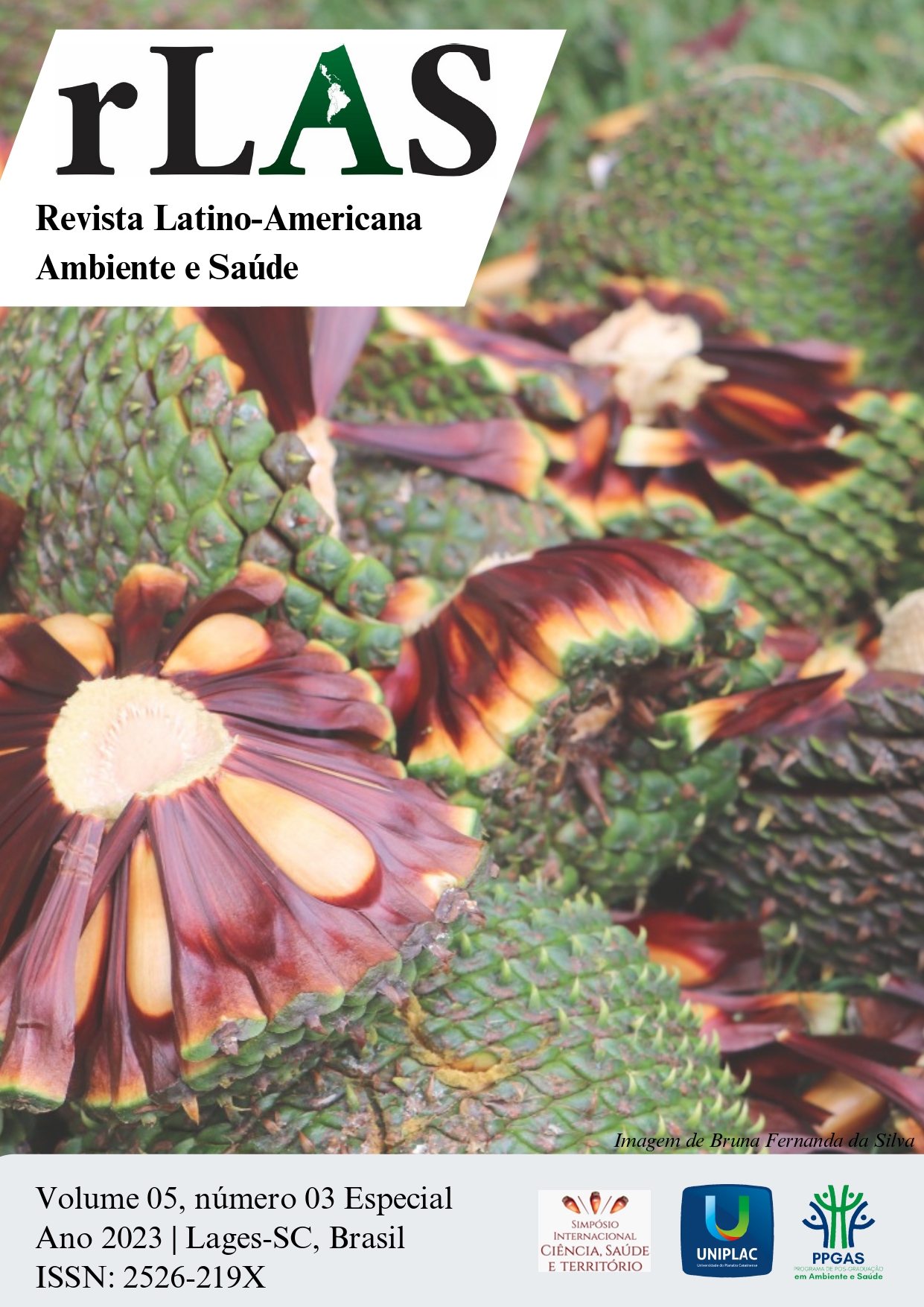Carbono orgânico total no solo em áreas com pastejo bovino em Lages-SC
Keywords:
Manejo da pastagem, Mudanças climáticas, PecuáriaAbstract
Intensive agricultural production has become the subject of debate due to its adverse effects on the environment, especially greenhouse gas emissions and climate change. Thus, one way to contain carbon (C) emissions to the atmosphere is to integrate soil and pasture management studies with animal production, while allowing the accumulation of C in the soil. This study aimed to finish the theories of total organic carbon (TOC) in the soil and to evaluate the relationship between the presence of cattle in grazed areas. For this, the work was carried out in Lages - SC, which has a humid mesothermal climate and mild summers, classified as Cfb in the Köeppen Climate Classification. The sample areas were divided into paddocks with and without cattle grazing, with four replications each. Soil samples were collected at depths of 0 - 5, 5 - 10 and 10 - 20 cm, which were dried, macerated and sieved to test TOC levels through dry protection. The evaluated managements did not have significant differences (p>0.05) according to ANOVA. In the analyzed period there was no significant change in the C contents in the soil. However, additional analyzes such as assessment of carbon stocks are required to fully understand the relationship between management practices and soil C content.
References
BERTOL, I. Avaliação da erosividade da chuva na localidade de Campos Novos (SC) no período de 1981-1990. Pesquisa Agropecuária Brasileira, v. 29, n. 9, p. 1453-1458, 1994.
CARVALHO, P. C. F. et al. Integrating the pastoral component in agricultural systems. Revista Brasileira de Zootecnia, v. 47, p.e20170001, 2018.
DWIVEDI, D. et al. Abiotic and biotic controls on soil organo–mineral interactions: developing model structures to analyze why soil organic matter persists. Reviews in Mineralogy and Geochemistry, v. 85, n. 1, p. 329–348, 2019.
EMAIRE, G. et al. Integrated crop–livestock systems: Strategies to achieve synergy between agricultural production and environmental quality. Agriculture, Ecosystems & Environment, v. 190, p. 4-8, 2014.
EMBRAPA, Centro Nacional de Pesquisa de Solos. Manual de métodos de análise de solo. 3 ed. Rio de Janeiro: EMBRAPA, p. 575, 2017.
IBGE. PPM 2019: após dois anos de queda, rebanho bovino cresce 0,4%. Outubro, 2020. Disponível em: https://agenciadenoticias.ibge.gov.br/agencia-sala-de-imprensa/2013- agencia-de-noticias/releases/29163-ppm-2019-apos-dois-anos-de-queda-rebanho- bovino-cresce-0-4. Acesso em: 29 abr. 2023.
ISLAM, M. R.; SINGH, B.; DIJKSTRA, F. A. Stabilisation of soil organic matter: Interactions between clay and microbes. Biogeochemistry, v. 160, n. 2, p. 145-158, 2022.
ONU. Organização das Nações Unidas. Transformando Nosso Mundo: A Agenda 2030 para o Desenvolvimento Sustentável, 2015.
RIBEIRO, R. H. et al. Managing grazing intensity to reduce the global warming potential in integrated crop–livestock systems under no‐till agriculture. European Journal of Soil Science, v. 71, n. 6, p. 1120-1131, 2020.
ROSA, R.; SANO, E. E.; ROSENDO, J. S. Estoque de carbono em solos sob pastagens cultivadas na bacia hidrográfica do rio Paranaíba. Sociedade & Natureza, v. 26, p. 333- 351, 2014.


